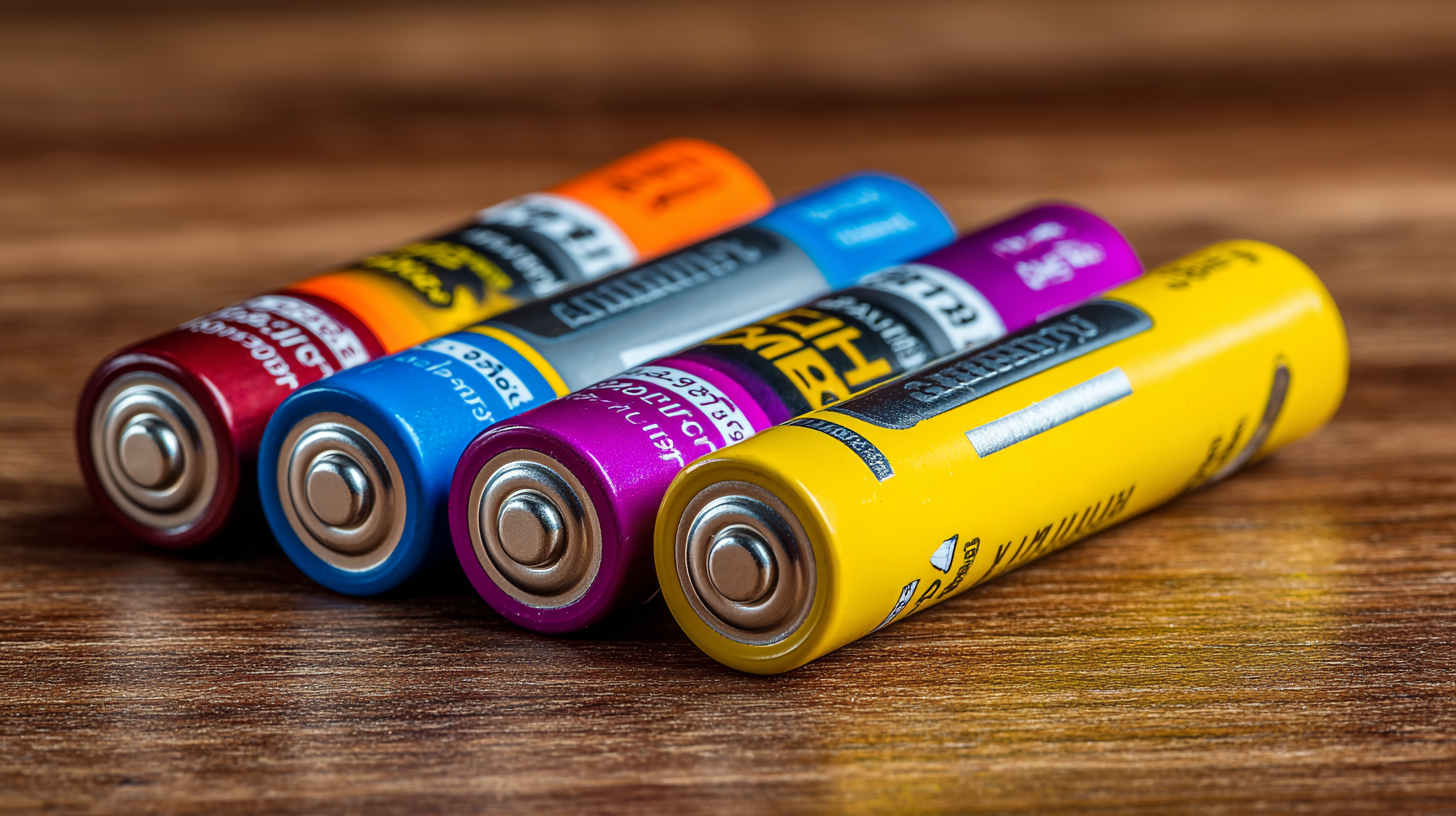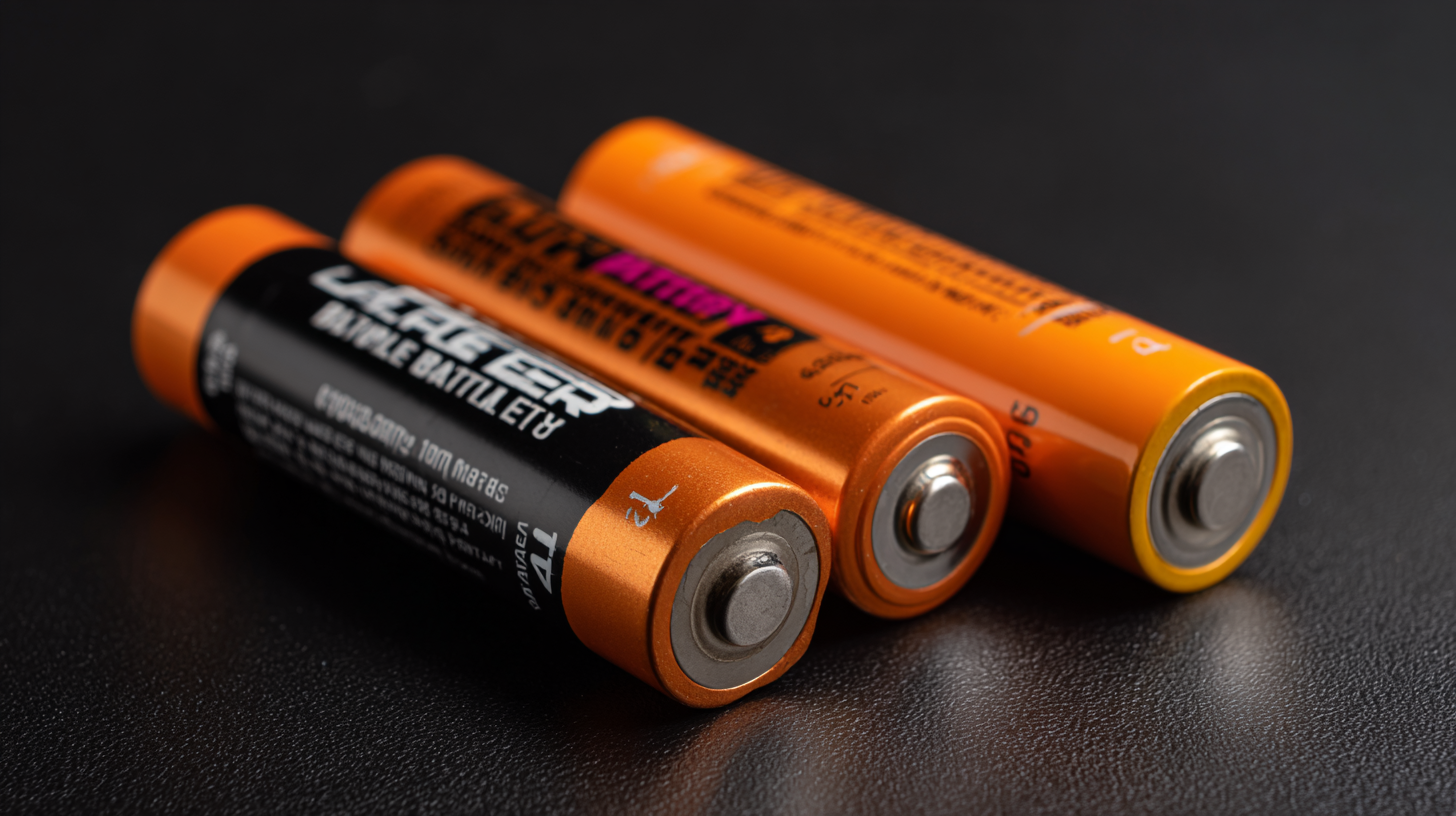Ultimate Guide to Comparing the Best AA Batteries for Every Need
When it comes to powering our everyday devices, the importance of selecting the right AA batteries cannot be overstated. According to a recent market research report by Technavio, the global AA battery market is projected to grow by over 4% annually, indicating a rising demand for reliable power sources in both household and commercial applications. With numerous manufacturers flooding the market, the challenge lies in distinguishing high-quality options from subpar alternatives. Understanding the intricacies of battery chemistry, performance metrics, and manufacturer reputation is essential for informed consumer choices. This ultimate guide will delve into the essential criteria for comparing AA batteries, highlight top-performing brands, and provide insights on battery longevity, cost-effectiveness, and eco-friendliness—all key factors to meet diverse needs in today’s technology-driven world.

Key Factors to Consider When Choosing AA Batteries for Your Devices
When choosing AA batteries for your devices, it's essential to consider several key factors that can significantly impact performance. First and foremost, the battery's capacity, often measured in milliampere-hours (mAh), plays a crucial role in determining how long your device will run before needing a replacement. Higher capacity batteries typically offer longer usage times, making them ideal for high-drain devices like digital cameras or gaming controllers, where performance is paramount.
Another important factor is shelf life, especially if you don't use your devices frequently. Some batteries are designed to retain their charge for extended periods, which is beneficial for emergency kits or infrequently used gadgets. Additionally, the environmental impact of battery disposal should not be overlooked; opting for rechargeable options can significantly reduce waste over time. As the global alkaline battery market is set to grow from $7.92 billion in 2025 to $10.18 billion by 2032, understanding these key factors will help you make informed choices tailored to your needs while contributing to a more sustainable future.
Ultimate Guide to Comparing the Best AA Batteries for Every Need
| Battery Type | Capacity (mAh) | Voltage (V) | Rechargeable | Price ($) | Best Suited For |
|---|---|---|---|---|---|
| Alkaline | 2000 | 1.5 | No | 0.50 | Toys, Remote Controls |
| NiMH | 1800 | 1.2 | Yes | 1.20 | Digital Cameras, Game Controllers |
| Lithium | 3000 | 1.5 | No | 1.50 | High-Drain Devices, Flashlights |
| Zinc Carbon | 1200 | 1.5 | No | 0.25 | Low-Powered Devices |
Comparative Analysis of Popular AA Battery Brands and Their Performance
When it comes to choosing the best AA batteries, a comparative analysis of popular brands reveals significant differences in performance, longevity, and value. Brands like Duracell and Energizer are often at the forefront, known for their reliability and impressive shelf life.
Duracell batteries typically excel in high-drain devices such as digital cameras and remote controls, thanks to their advanced Power Preserve technology, which helps maintain power over extended periods. In contrast, Energizer batteries often shine in eco-friendliness, offering rechargeable options that are perfect for consumers looking to reduce waste while still getting dependable performance.
On the other end of the spectrum, budget-friendly brands like AmazonBasics and Rayovac may be appealing choices for everyday use. While they might not deliver the same peak performance as their premium counterparts, they can still hold their own in lower-drain devices.
For example, when used in toys or clocks, these batteries generally provide adequate power at a fraction of the cost. Each brand's unique strengths make it essential for consumers to consider the specific needs of their devices when selecting AA batteries, ensuring optimal performance tailored to their requirements.
Exploring the Environmental Impact of Different AA Battery Types
 When it comes to powering our devices, the choice of AA batteries extends beyond mere performance. An important aspect frequently overlooked is the environmental impact of different battery types. Traditional alkaline batteries, while commonly used, contribute significantly to landfill waste. They contain heavy metals such as mercury and cadmium, which can leach into soil and water, posing risks to both ecosystems and human health. As consumers become more environmentally conscious, understanding these implications is crucial.
When it comes to powering our devices, the choice of AA batteries extends beyond mere performance. An important aspect frequently overlooked is the environmental impact of different battery types. Traditional alkaline batteries, while commonly used, contribute significantly to landfill waste. They contain heavy metals such as mercury and cadmium, which can leach into soil and water, posing risks to both ecosystems and human health. As consumers become more environmentally conscious, understanding these implications is crucial.
In contrast, rechargeable batteries, such as NiMH (nickel-metal hydride), provide a more sustainable option. Although the manufacturing process for rechargeable batteries is resource-intensive, their ability to be reused hundreds of times offsets this initial impact. Additionally, lithium-ion batteries, commonly found in high-drain devices, offer longer life cycles and less waste over time. However, the extraction of lithium poses its own environmental challenges, emphasizing the need for ethical sourcing and recycling programs. As we explore battery choices, considering their life cycle, from production to disposal, can guide consumers toward making more informed and sustainable decisions.
Innovative Technologies Shaping the Future of AA Batteries
The future of AA batteries is being revolutionized by innovative technologies that enhance performance, longevity, and sustainability. One key advancement is the development of lithium-based batteries, which offer a higher energy density compared to traditional alkaline options. This means consumers can enjoy longer-lasting power for their devices while reducing the frequency of replacements. Furthermore, lithium batteries are often designed to operate efficiently in a wider range of temperatures, making them ideal for both indoor and outdoor use.
Sustainability is also becoming a focal point in the evolution of AA batteries. Recycling initiatives and biodegradable materials are being integrated into manufacturing processes, addressing the environmental concerns associated with battery disposal. Emerging technologies like solid-state batteries promise even greater safety and efficiency, addressing both performance and ecological impact. As these innovative solutions continue to shape the marketplace, consumers can look forward to not only better-performing AA batteries but also a reduced environmental footprint in their everyday lives.
Battery Performance Comparison
This chart compares the average capacity (in mAh) of different types of AA batteries, showcasing the performance across various battery technologies such as Alkaline, Lithium, NiMH, Zinc-Carbon, and Rechargeable options.
Cost-Effectiveness: Finding the Best Value AA Batteries for Budget-Conscious Consumers
When it comes to selecting the best AA batteries, cost-effectiveness plays a vital role for budget-conscious consumers. According to a report by the Battery University, the price per battery can vary significantly, ranging from as low as $0.20 for budget brands to over $1.50 for premium options. Although cheaper batteries may seem appealing at first glance, it’s essential to assess their overall value based on performance and longevity. Research indicates that while budget batteries might last for only 20% of the lifespan of higher-end alkaline batteries, investing slightly more upfront can lead to savings in the long run by reducing the frequency of replacements.

Furthermore, lithium batteries have emerged as a popular choice among consumers looking for both performance and value. A study by Consumer Reports found that lithium AA batteries can last up to five times longer than standard alkaline batteries, often justifying their higher price point. For those who often use high-drain devices such as digital cameras or gaming controllers, the increased initial cost of lithium batteries can ultimately lead to lower total expenses, as users won't need to replace them as frequently. By comparing the cost per hour of usage, savvy consumers can make informed decisions that align with both their budget and their device needs.
